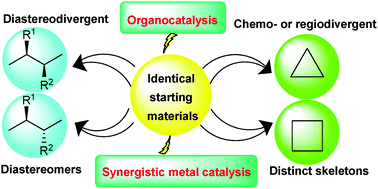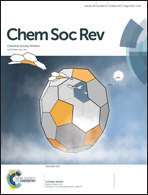Switchable divergent asymmetric synthesis via organocatalysis
Abstract
The development of switchable chemo-, regio-, or diastereodivergent reactions, in which two or more structurally and stereogenically different types of chiral products could be produced efficiently from an identical set of starting materials under readily tunable catalytic conditions, is one of the ultimate goals in asymmetric catalysis. This tutorial review will focus on the application of a variety of chiral organic catalysts, including Lewis bases, and Brønsted bases and acids, in a diverse range of stereoselective reactions in a switchable manner. Meanwhile, a few examples of divergent reactions through synergistic activation of organocatalysis and metal catalysis will also be discussed.



 Please wait while we load your content...
Please wait while we load your content...